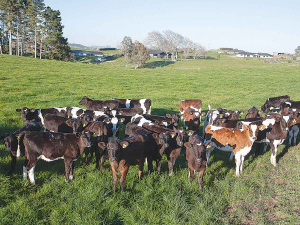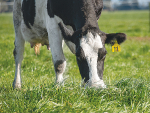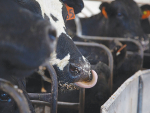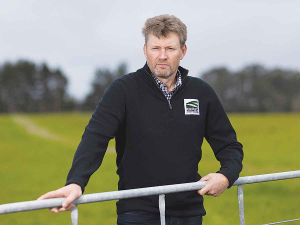Avoid any abrupt changes in feeding practices, such as removing milk or meal suddenly. Also minimise any major changes in the environment (e.g. use the same paddock if weaning off milk outside onto pasture). Don’t wean off milk indoors and then abruptly put your calves outside into a foreign environment.
A calf’s rumen development is the most important factor to consider when making a weaning decision. The only way this can be assessed is by measuring the amount of solid feed calves are readily eating. This should be at least 1 kg of meal or 2 kg of pasture per day when commencing the weaning process.
The best time to start implementing “step-down weaning” will depend on your milk feeding system, but three good rules of thumb are:
Weight-for-age target met (common weights used for weaning are 70kg for Jerseys, 80kg for Crossbreds, and 90kg for Friesians)
Eating more than 1kg of meal or 2kg of good quality forage (e.g. pasture) per day
Calves are in good health and not receiving animal health treatments
Prior to weaning, closely monitor calves and establish whether they are all consuming solid feed (i.e. eating at the feed trough and demonstrating rumination behaviour). Also carefully observe for any signs of illness and consider separating and reintroducing milk for those calves that don’t seem to be coping.
Once-a-day feeding with restricted milk allowance can be used as a weaning method.
Low milk allowance calves can be weaned over 3-4 days, while high milk allowance calves (>6L/day for an average size calf) need 2-3 weeks, to increase solid feed
intake and thereby help prepare the rumen for better post-weaning performance.
Ideally, the step-down weaning procedure should be implemented in 4-5 steps where 20-25% of the milk offered is reduced every 4-5 days. If using automatic feeders, a 5% linear reduction of milk offered daily over 20 days is ideal.
When calves should be weaned off meal is less well defined, as calves may struggle to get optimal nutrition out of dry summer grass.
However, it is generally good to keep feeding at least 2kg of meal per calf for at least 2 weeks post-weaning off milk and then gradually wean calves from meal feeding over a 2-week period. This will give the calves’ digestive tract (including microbes) and metabolic system time to adapt to the change in diet.
It will also reduce metabolic upsets and maintain an adequate flow of nutrients to the animal to support its growth and health.
Other considerations:
• Weigh a sample of calves to monitor target growth rates before making a weaning or management decision. Weigh bands are a useful tool to approximate calf weights
• Make sure shelter and water are easily accessible post weaning e.g. shelter belt
• Article sourced from www.nzagbiz.co.nz











